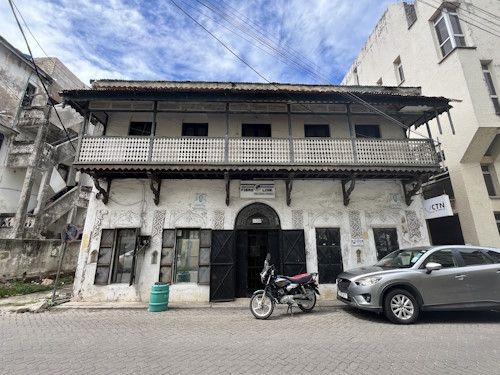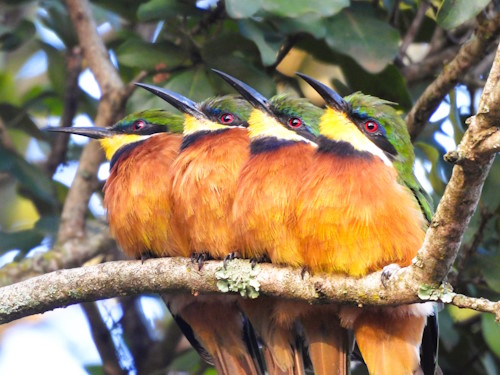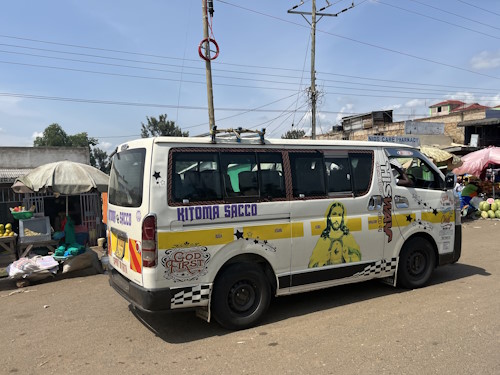Blog Countries
Top Tips for Kenya
Kenya almost killed me. The murder attempt actually was done by a Kenyan goat, which, while I was walking the streets of Old Mombasa (pictured below), decided to make a run for its freedom and jumped down to street level from a balcony. Its hoof bruised my hand black and blue, but it could as well have landed on my head. It must have been an absurd scene to watch, but the Kenyans aren’t disturbed by a bit of chaos and unpredictability.
Still want to go? Here are some tips for travelling to Kenya as a WH Traveller.
1. Be flexible
Kenya overall is an easy country to travel in: they’re used to tourists, almost everybody speaks English and is willing to help you out (often hoping there’s a little extra in it for them, but not pushing for it). But it certainly doesn’t run like clockwork: departure times of all my 3 domestic flights and the international flight were changed significantly at least once, access to a site that was granted can be revoked for vague reasons (see my Kaya Kauma story), I had an airport transfer who didn’t know how to get to the airport, etc. So be sure to allocate a buffer in both time and money for your trip, as a too-tight schedule might end in missing out on a WHS tick.
2. You need to spice it up a bit
Thematically, there is nothing wrong with Kenya’s set of 8 WHS (a bit of Swahili culture past and present, the Great Rift Valley, Mount Kenya), but they will not bring you to the highlights of Kenya per se. The average rating of its WHS is mediocre at 3.1, and I gave most of the sites between 2 and 3 stars. Visit times were also often short, leaving you to wonder what to do the rest of the day. The set leans more towards cultural sites than natural, and the East Coast seems to be a favoured place to promote. So, especially for a first visit to the country, you might want to spice your itinerary up a bit with a few extra national parks. Notably missing is the Masai Mara, of course, but also habitats further north, such as in Samburu or Meru, could be worth it.
3. Be prepared to go fully digital
To pay for goods and services, Kenyans use M-Pesa as a digital payment system. Even the preacher who came to bless us for a matatu trip to Nakuru accepted tips via M-Pesa. If you’re going to be travelling independently, it’s best to set up your own M-Pesa account (you need a SafariCom physical SIM card). For shorter trips or guided safaris, you can still work your way around it by using cash, a credit card and Wise money transfer.
Also, virtually all parks and cultural monuments can only be paid via the Ecitizen portal. You will already set up an account here when you’re applying for the ETA to get into the country. Ecitizen for foreigners either works or it doesn’t – 90% or so have no problems but there are lots of complaints to be found online; it worked for my ETA but I never got it to function for park payments. The whole system (it is meant for Kenyans to apply for public services such as getting a new passport and all kinds of permits) is way too elaborate to just pay an entry ticket. The workaround is to get a Kenyan to secure a ticket, sometimes at the last step you can then finish it yourself by handing over your physical credit card to the cashier.
4. Public transport is easy.
Kenya is densely populated, which also means that there is a need for frequent public transport. I mostly used matatus, minibuses (pictured below), which are doable as long as you’re not very tall or have a lot of luggage. They no longer take more passengers than they have seats (the police perform frequent checks) and most of them are express ones, which means no stops en route. They’re hard to beat regarding speed and cost. In the cities, it’s easiest to just jump on the back of a motorbike (boda boda). I was most proud of my 100 KSh (0,70 EUR) transfer (shared taxi) from Kenyatta Airport to the Central Business District in Nairobi, for which the airport taxis normally will ask 20-25 USD. The itinerary that I posted on the Forum shows my route along 7 WHS on public transport. For a comprehensive self-drive one, I recommend the one Zoë posted earlier.
5. Pricing is all over the place
‘Safari’ is the main business of Kenya’s tourism industry, so a Kenya trip can get expensive if you use safari companies to organize it for you (one quoted me 400USD to get to Arubuko Soko Reserve for a day). But the WHS are a whole different cup of tea and most of these sites can be accessed independently. Entrance fees add up to the overall costs due to foreigner pricing, which is routinely applied in Kenya. Especially the National Parks are expensive and they will raise their prices again by the 1st of July. On the other hand, food is inexpensive and the accommodation I found good value for money. Overall, the cost of my 7 WHS fell way below my 650 EUR per WHS limit. I did skip the Lake Turkana WHS, though, for cost reasons and because I think that region deserves more time than a quick one-day in and out.
Els - 22 June 2025


